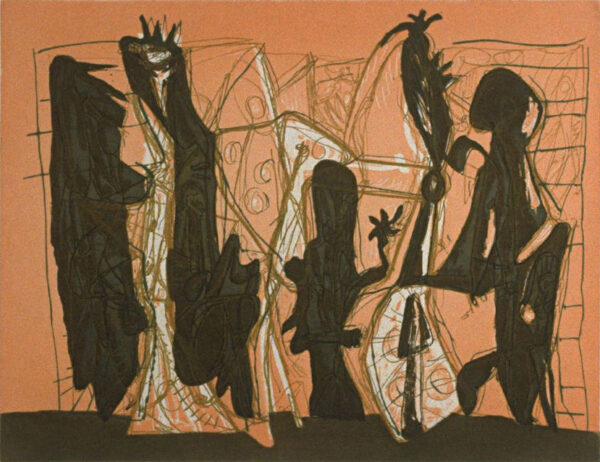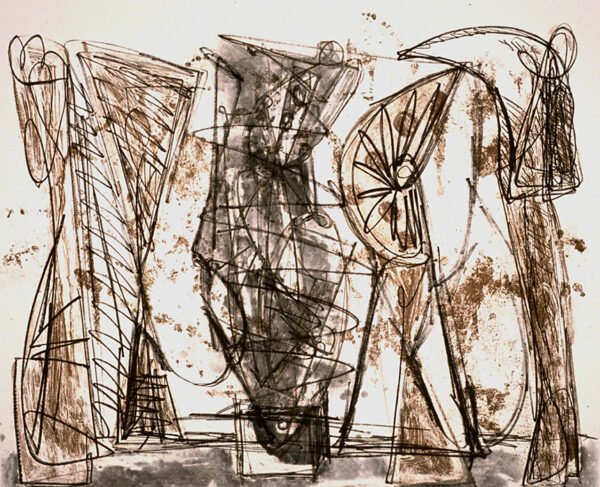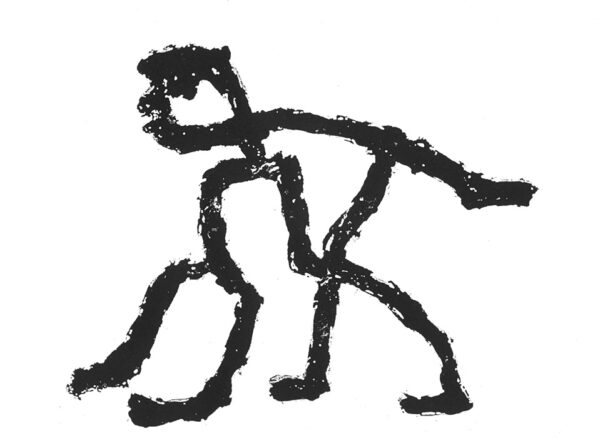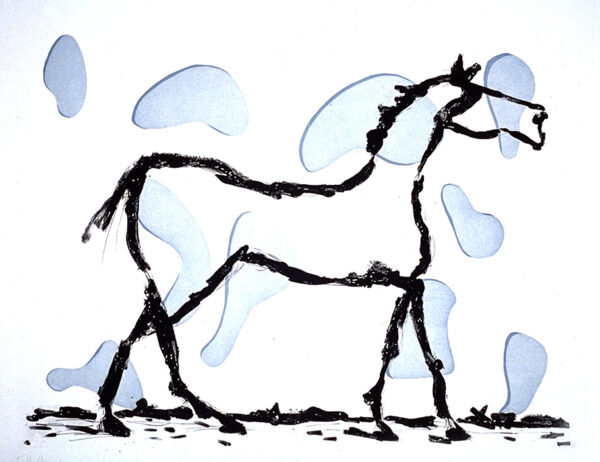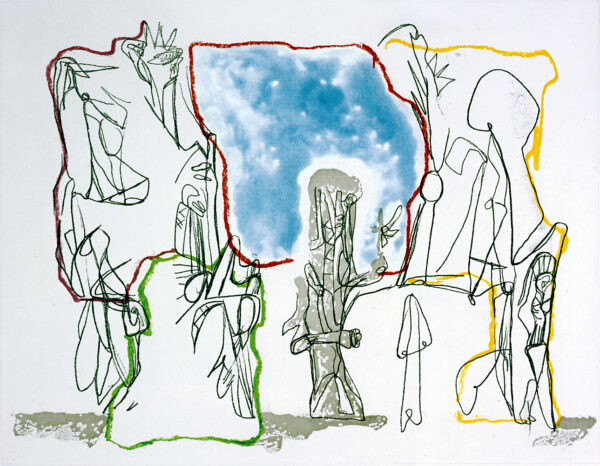“Everything that Markus Lüpertz does is connected with his attitude as a ‘painter’ and with his claim to be concerned exclusively with painting,” commented German art historian Siegfried Gohr in a 1979 catalogue essay for the artist’s solo exhibition at London’s Whitechapel Art Gallery. Called a poet, professor, soccer fan, musician, boxer, diving enthusiast, dandy, and artist, Lüpertz defies narrow categorization and has sought to push the boundaries of modern conventions in his art. He has spent the last five decades making paintings and large-scale public sculptures that challenge, confront, and polarize viewers.
Born in 1941 in Liberec, Bohemia (now the Czech Republic), Lüpertz with his family immigrated to West Germany at the age of seven. As an adolescent, he attended art school at Werkkunstschule Krefeld, spent a year working in a coal mine, returned to art school at the Kunstakademie Düsseldorf, worked in road construction, and took a trip to Paris where he joined the French Foreign Legion. In 1962, he moved to Berlin where he emerged on the art scene with works called “Dithyrambs,” referencing Greek hymns in praise of the god Dionysus. In addition, he co-founded an artist-run cooperative, Galerie Grossgörschen 35, where he presented his first solo exhibition of the “Dithyrambs” paintings in 1964. In this early work, Lüpertz emphasized process over subject matter and used popular culture motifs as a starting point to create a detached narrative that investigates the balance between abstraction and figuration. For example, in one “Dithyramb”, he began with the Walt Disney cartoon character Donald Duck and then reduced the iconographic image to a series of multicolored circles, ellipses, and polyhedrons.
Lüpertz is a contemporary of Anselm Kiefer, A. R. Penck, and George Baselitz and is a prominent figure in postwar German art. He provoked controversy in the 1970s with a series of paintings that incorporated the by-then taboo motifs of the military helmet, the ear of corn, and the military cap from World War II. Throughout the following decades, Lüpertz continued to reinvent his art and challenge viewers by employing irony and literary and religious symbology in his compositions. In 2002, the artist completed his first monumental public sculpture, a statue of Aphrodite, which was installed in Augsburg, Germany. The residents of the city were so incited by the ugliness of the work that the City Council had it removed. Nicholas Serota, director of the Tate art museums and galleries in London, has written that Lüpertz is “one of the most adventurous contemporary painters in Germany.”
Markus Lüpertz’s first comprehensive retrospective was in the Bundeskunsthalle in Bonn, Germany in 2009. Important surveys of his work have been held at Haus der Kunst, Munich (2019); the Hirshhorn Museum and the Phillips Collection, Washington, DC (2017); The Hermitage State Museum, St. Petersburg (2014); Museum de Bellas Artes, Bilbao (2014); and Gemeentemuseum, The Hague (2011). The artist taught and was director of his alma mater, Kunstakademie Düsseldorf, from 1987-2009. He is the recipient of numerous awards, including the Villa Romana Prize, the German Critics Association Prize, and the Julio Gonzalez prize. In fall 1988, Lüpertz spent a week at Crown Point Press, San Francisco, where he produced six etchings. He is represented by Michael Werner Gallery in New York, London, and Germany. Currently living and working in Düsseldorf and Berlin, Lüpertz has said, “I’m a painter of my century. I’m a German painter.”
-Katharine Fulton-Peebles, Crown Point Press
